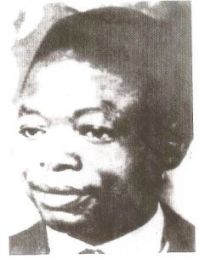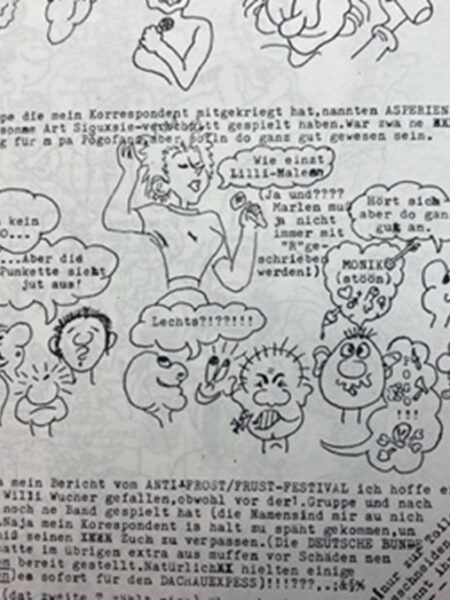Introduction
As the preface suggests, the idea of exploring the image of Australian history may have occurred to me long ago, yet it crystallised truly during one of the seminars of the Qualitative Research Methods course. Since the main theme of the Global History Lab was the convergent study of a divided world, I found it interesting to analyse one of the striking ways of dividing something, namely the creation of a stable, recurring stereotypical image. Since I had been studying Australian history for quite some time, dissecting its supposed essence in the minds of the members of academia seemed a fruitful undertaking.
Moving from personal anecdotal stories to the body of the research, I identified a very serious practical benefit of the project, the roots of which stretch back to, of course, a much less serious situation. While studying the Federation of Australia for at least five years, I noticed how little is known about the fifth continent’s history compared to any other area when a random fellow historian comes across the topic. Understanding current overall notion of Australian history within approachable academia (including outside of those who specialise on the mentioned theme) might help get insights on the directions of further research on Australia’s past without being locked in quite a narrow historiographic tradition. Thus, the project could help Aussie history go global.
When the research commenced, I expected humble though significant progress in broadening academic perspectives on Australian history and locating the main stereotypes and respective gaps in its general image. It seemed to me that the effort may pay off in gaining knowledge both on how to raise awareness for studying the unrightfully neglected topic and what exactly the general academic view of Australian history lacks compared to overall erudition on, for instance, Ancient Rome or Modern Japan.
The central research question, which emerged from the aforementioned intentions, appeared as follows: “What is the general image of Australian history in academia and why is that?” The question itself implies a variety of supplementary inquiries on some general aspects of the subject. These include asking for a brief characterisation of some basic themes in history of Australia, i.e. Aboriginal cultures, convict transportation, gold rushes, the Federation, World War I and so forth. The auxiliary questions constitute the main one by being its building blocks and thus creating a broader picture from those which are narrower. In a word, the central question is intended to bring up academic imagology of Australia’s past.
In terms of practical outcome, I opted for sort of a brochure to be produced which contains focal points of the academics’ impression of Australia’s past and possible research trajectories derived from them. Below I will describe how exactly I constructed the brochure, which in academic terms is called research methodology.
Methodology
To fully grasp the methodology of the project, it is sensible to consider the sources on which the research is based. The idea that was embodied in the project is as follows: to conduct interviews with representatives of academia, to identify the main images of the Australian past as they understand it, and then extrapolate those images to corresponding ones in academic literature and semi-academic products, such as popular articles and broadcasts.
Having been involved in intellectual history for quite a long time, I have certainly experienced a strong influence of discourse analysis, especially since it generated recursion, being applicable both to history and to reasoning about history. In relation to this project, discourse analysis also plays an important and quite specific role. Thanks to discourse analysis it is possible to capture the dominant linguistic units that are firmly associated with the history of Australia, and it was indeed possible to find such units both withing the speech of the interviewed historians and in written and multimedia sources.
Despite its specificity, discourse analysis still played a connecting role between different types of sources, yet the uniqueness of the study was given by the methodology of oral history, which was quite a discovery to me. Speaking with my respected respondents, I tried to encourage them to name as many associations as possible which pertained to the history of Australia as a whole, as well as to its thematic and chronological aspects. Delving deeper into the question, my interlocutors, to my and their own surprise, revealed rather unexpected aspects of stereotypes about the fifth continent, which allowed me to define the imagery in the most accurate manner.
The questions (such as “Does Australian history correspond to the world history?” or “Do you consider Australia’s past “special” in any sense?”) were as open as possible, so as to let the interviewees express their perception of Australia’s past without “guiding manoeuvres” by me. Hence, the stereotypes found in the interviews seemed to be more genuine than those that could have been extracted from a heavily guided conversation. In essence, our interviews were built on a cumulative principle, that is, in the course of the conversation we moved from primitive and general ideas to very subtle and precise theses about Australia’s past. Surprisingly, the breadth and depth of the questions and accompanying discussions allowed the respondents to freely engage in lengthy reflections that led to very specific and therefore noteworthy findings in the imagology of Australian history.
The Research
The results of the interviews and the accompanying analysis of other sources showed the existence of common imagological trends within which academics view the past of the fifth continent. The first of these trends I would define as “geographisation” of Australian history, i.e. treating Australia’s past geographically. Here, among other things, different academic and ethnic backgrounds of my interviewees proved crucial.
This exact phrase from the conversation with Professor Jeremy Adelman pretty much sums up all of my respondents’ impressions of Australian history at the very beginning of each interview. The fact that Professor Adelman was himself interested in land history turned out to be less of a factor than I expected since two other interviewees — Professor Victor Apryshchenko and Professor Gustavo Paz — also immediately gave specifically geographical retrospective impressions of Australia, albeit being specialists in completely different regions and quite different aspects of the regions’ respective histories.
This physical-map-related notion of the fifth continent (actually, the very term “the fifth continent” lies within that notion) could also be found in Australia’s popular history narrated through multimedia. For instance, “The Animated History of Australia”,
which has over 2.5 million views on YouTube, literally starts with a reference to a triple of Ancient Greek and Roman learned men who believed “there must be some undiscovered continent balancing the globe somewhere in the south”. I want the reader to pay more attention to this. European, Asian and even American histories usually begin with the local peoples and civilizations, yet Australia’s genesis is found in bare geography with no population yet, and only after the concept of Terra Australis do we actually learn about the Aboriginal population. It is noteworthy that the geographical narrative of the semi-academic sources completely coincides with the first impressions by my purely academic respondents concerning the history of what is absolutely authentic to call in this context the fifth continent.
The “geographisation” of Australia is also visible in popular culture. For example, one of the cover images of perhaps the most stereotypical Australian pop song, which incidentally gave the name to this project, perfectly reflects the “geographising” tendency in the imagology of the Land Down Under. The cover features Uluru, Australia’s signature natural landmark, although the song’s content is not focused solely on the country’s natural beauty but is a rather sharp social satire. Nevertheless, it is the geographical image that is featured on the cover of the hit by Men at Work.
Geography as a cornerstone of the imagology of Australia’s past allows us to smoothly move on to another important aspect — the motif of the “frontier development” as the logic of the overall development of Australia.
Professor Paz said this when asked to describe a notable trend which occurred throughout Australian history. Professor Jeremy Adelman, who had written academic texts on the frontier development, of course, also referred to that trend, and so did Professor Victor Apryshchenko recall these developmental motifs from the literature he once came across. Again, each and every respondent came up with the “frontier development” pertaining to Australian history regardless of their speciality.
Similar frontier imagery can be traced in academic texts that in one way or another touch upon the past of the fifth continent. Professor James Christopher Belich’s brilliant book “Replenishing the Earth: The Settler Revolution and the Rise of the Angloworld, 1783–1939”[1], among many things, examines Australia in sufficient detail precisely in the context of its development by British settlers, that is, there developmentalism could be highlighted. Such developmentalism seems thus inherent to the history of the fifth continent in particular. In this respect, one could also find an extremely interesting work “The Idea of Greater Britain: Empire and the Future of World Order, 1860–1900”[2] by Professor Duncan Bell to contain similar motifs of Australian history. The fact that people from the British Isles created a unique polity by settling and then developing once frontier territories has played a significant role both in the discourse of Imperial Federation and in the historiography of the late Victorian era, particularly in relation to Australia.
Undoubtedly, the development of the frontier is a phenomenon that is far from unique to Australia, and therefore it is logical to call the next important stereotype for examining Australia’s past “a global view of Australian history through the prism of imperial and colonial history” or just “the focus on imperial/colonial history”. Although the respondents spent quite a long time discussing Australia in exactly that vein, the most interesting comparison, as it seemed to me, was made by Professor Victor Apryshchenko. Basically, he drew a parallel between the policies of the British Empire in Australia and the Russian Empire in the Caucasus, emphasising the deliberate exoticisation of those regions by the governments and intellectuals in London and Saint Petersburg, respectively.
Professor Apryshchenko rightfully concluded the strong colonial motif. Indeed, it seems that one of the most popular facts about the history of Australia is that the country was a British colony (maybe even the British colony since its convict settlements became sort of a signature of British colonisation).
The stereotype discussed above is supported by the geopolitical associations in which Australia’s past is thought of. Every respondent at one time or another compared Australia to other British colonies, and Professor Jeremy Adelman, who is Canadian, provided an eloquent trope:
Professor Adelman’s colleagues, although not originally from English-speaking countries, nonetheless similarly paired Australia with Canada, New Zealand and South Africa, within the British Empire, while drawing parallels with the colonial policies of the Spanish and Russian empires.
This intra-British or even intra-imperial perspective is also quite conspicuous in academic writing. Professor Luke Trainor’s intriguing research “British Imperialism and Australian Nationalism: Manipulation, Conflict and Compromise in the Late Nineteenth Century”[3] shows Australia’s past precisely in the British-Australian perspective. Similarly, Professor James Jupp’s thought-provoking book “The English in Australia”[4] has a noticeable focus on viewing Australian history as inseparably connected with its British “cousin” or even “mother”.
Professor Jupp is also widely known for the debate around Anzac Day. This allows us to make a thematic transition to the next feature of the perception of Australian (especially twentieth century) history — its commemorative nature. When asked about any academic article on Australia, Professor Victor Apryshchenko summarised a text devoted to the remembrance of ANZAC in the country. Professor Jeremy Adelman also highlighted the First World War as stereotypical when discussing modern Australian history. I was pleasantly surprised by Professor Gustavo Paz’s question:
, which he asked when we were analysing the collective memory of Australians. After discussing the song in detail, Professor Paz and I came to the conclusion that the song has become firmly entrenched in the discourse of Australian history precisely because of its commemorative usage.
Interestingly enough, a popular amateur history video called “Historia Australia Countryballs”
which, as in the previous pop history case, has more than 2.5 million views on YouTube has a distinctive detail of commemorative nature. Basically, the video shows countryballs (flag-coloured sentient circles) which gradually evolve according to the course of Australia’s past. When the timeline reaches the year of 1914, the main countryball “dresses up” in the signature Australian uniform thus reflecting the central event of modern Australian history. The uniform (especially its slouch hat) is strongly associated with the Australian nation and is widely used in various commemorative events including Anzac Day. In short, Australian commemorations influence a lot how academics and the people who produce their content based on academic writing perceive the history of the fifth continent.
Last but not least, running through all the interviews and other sources, there was a key trope in the Australian historical narrative — its heavy reliance on pop culture. While pop culture itself was not the focus of the discussions about Australia’s past, references to it were wedged into every interview, including references to Crocodile Dundee and the aforementioned Max Rockatansky, with whom my research began and with whom it shall conclude.
Conclusion
In the course of the project, a thesis that had been troubling me for a long time was confirmed and took on its final form: “There is an exotic perception of Australian history in contemporary academia which leads to recurrent exoticist motifs in historical narrative”. For the sake of further research and discussion I would like to present the “exoticist check-list of Australian history” below:
- “Geographisation” — needs de-objectification.
- “Frontier development” — needs a non-developmental perspective.
- “Imperial/colonial focus” — needs supracolonial perspective.
- “Commemorative nature” — needs digging up neglected symbols and attributes of Australia’s past.
- “Reliance on pop culture” — needs incorporating alternative authentic culture pertaining to Australian history (without the established souvenirs).
On the right side of the dashes one can find options for further development of the project’s topic, which, as it at least seems to me, has the potential to become a more comprehensive study with broader source material and more academic and non-academic interviewees.
[1] Belich, James Christopher. Replenishing the Earth: The Settler Revolution and the Rise of the Angloworld, 1783–1939. Oxford: Oxford University Press, 2009.
[2] Bell, Duncan. The Idea of Greater Britain: Empire and the Future of World Order, 1860–1900. Princeton: Princeton University Press, 2007.
[3] Trainor, Luke. British Imperialism and Australian Nationalism: Manipulation, Conflict and Compromise in the Late Nineteenth Century. Cambridge: Cambridge University Press, 1994.
[4] Jupp, James. The English in Australia. Cambridge: Cambridge University Press, 2004.










